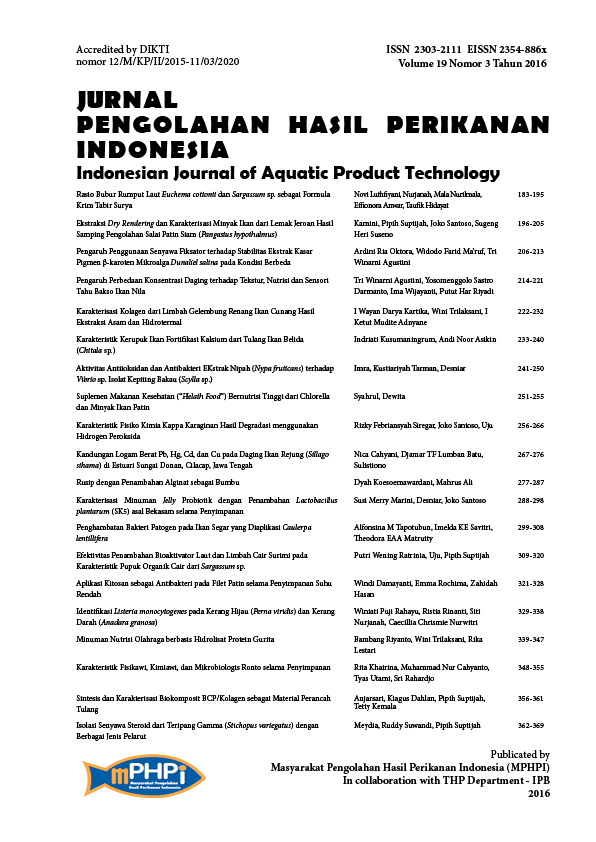Synthesis and Characterization of Biocomposite BCP/Collagen for Bone Material Scaffold
Abstract
Abstract
Biphasic calcium phosphate (BCP) widely used as implants and scaffolds in different orthopedic and dental application. The aim of this study was to determine synthesis and characteristics of biocomposite BCP/collagen as bone scaffold material. BCP/collagen was classified into three groups: 1) BCP/K5 (5% collagen in scaffold), 2) BCP/K10 (10% collagen in scaffold), and 3) BCP/K15 (15% collagen in scaffold). The samples were characterized by Fourier Transform Infrared (FTIR) Spectroscopy, and Scanning Electron Microscope (SEM) techniques. Overall, concentration of collagen was not significantly different to the spectrum. However, FTIR analysis shows the change intensity in bio-composite BCP/collagen. Collagen intensity Higher concentration when collagen concentration in scaffold higher. Morphology analysis of the scaffold showed significant differences in pore formation. BCP/K15 was showed pores formed in scaffold. Synthesis of composite BCP/collagen does not affect the spectrum of functional groups, but affects the formation of pores in the bone scaffold material.
Authors
Authors who publish with this journal agree to the following terms:
- Authors retain copyright and grant the journal right of first publication with the work simultaneously licensed under a Creative Commons Attribution License that allows others to share the work with an acknowledgement of the work's authorship and initial publication in this journal.
- Authors are able to enter into separate, additional contractual arrangements for the non-exclusive distribution of the journal's published version of the work (e.g., post it to an institutional repository or publish it in a book), with an acknowledgement of its initial publication in this journal.





